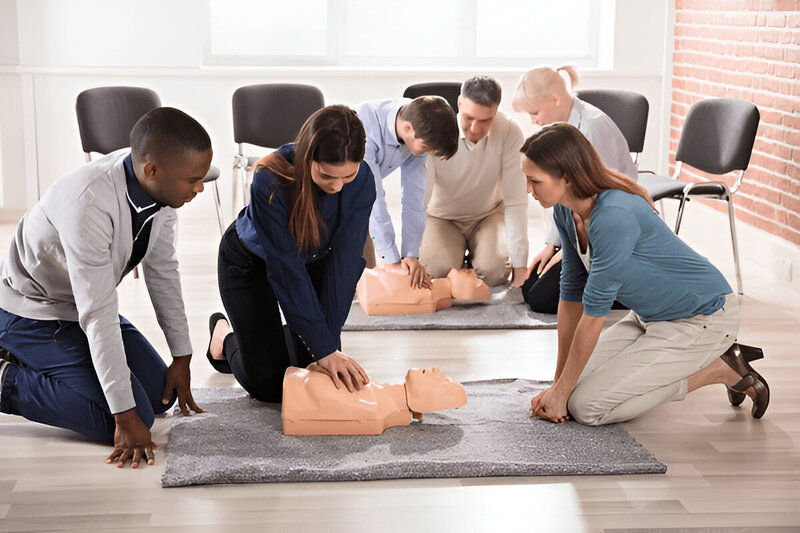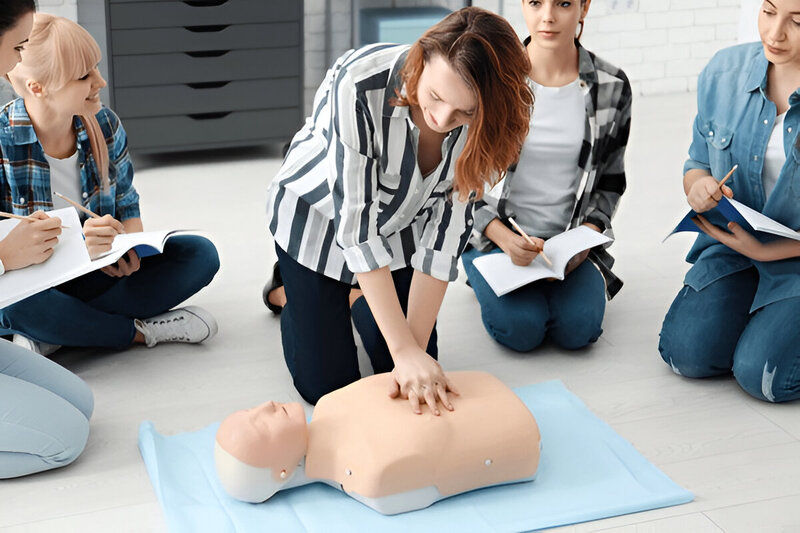How a First Aid CPR Course Brisbane Can Save Lives in Emergencies
- Lara Buck
- Aug 27
- 4 min read

Every second counts in an emergency and knowing how to act quickly and effectively can mean a matter of life or death. The first aid CPR course Brisbane trains an individual to use the life-saving skills necessary to face emergency incidents confidently until professional medical assistant availability. This all-dimensional training improves survival rates, but it also keeps communities empowered to act immediately, skilfully, and intelligently at the time of an emergency.
The following article describes how a first aid CPR course Brisbane saves life, the benefits of these emergency skills, and why this training is compulsory for every dweller of Melbourne.
Understanding the Life-Saving Importance of First Aid CPR Course Brisbane
Cardiac arrests and other forms of medical emergencies happen at home, work and public spaces. When these emergencies happen, it is of utmost importance to give immediate first aid because every additional minute without CPR or defibrillation will decrease survival chances approximately by 10%. A first aid CPR course Brisbane teaches what to do when one has:
Recognizing signs of cardiac arrest
Providing quality chest compressions and rescue breaths
Using automated external defibrillators (AEDs) properly
Managing choking and other life-threatening situations
Having trained people nearby, who can answer immediately, closes that critical "gap" between the occurrence of emergency and the arrival of an ambulance, increasing results drastically.
How First Aid CPR Course Brisbane Shortens Emergency Response Times
Emergency medical services in Brisbane are required to take an average of several minutes to respond. As such, bystander intervention becomes very relevant at times, such as in the period of time a heart attack victim is waited for the arrival of paramedics. First aid CPR course Brisbane also reduces fatal delays with the increased chances of someone delivering effective first aid and CPR rapidly:
Ways first aid CPR training speeds up emergency response:
Prompt Recognition: Training improves the ability to quickly recognize cardiac arrests and other emergencies, triggering faster reactions.
Immediate CPR Initiation: Learners understand the correct technique, ensuring that chest compressions and rescue breaths initiated are effective from the very beginning.
AED Usage: The course educates on locating and operating devices associated with AEDs, offering electrical therapy to restore heart rhythm before paramedics arrive.
Calmness Under Pressure: Continued training creates confidence and diminishes hesitation, while also contributing toward improvement in the totality of the emergency management.
Lessening the time before early intervention gets every brain and organ to save and improve survival likely in many cases, improving neurological recovery as well.
Comprehensive Skills Covered in First Aid CPR Course Brisbane

A good first aid CPR course Brisbane should cover wonderful outcomes of emergency skills preparedness training because they prepare trainees for their unique life experiences. Examples include:
Cardiopulmonary Resuscitation (CPR): Compressed depth, speed and rescue breathing techniques
Automated External Defibrillator (AED) Training: Realistic practice using AED units commonplace in public
Choking Management: Identifying airway blockages and performing abdominal thrusts or back blows safely
Burns, Bleeding and Fracture: Basic wounds and trauma management until outside assistance arrives
Emergency Response Protocols: DRSABCD (Danger, Response, Send for help, Airway, Breathing, CPR, Defibrillation) for coordinated response structure Another effective way of preparing is teaching to take care of both cardiac and non-cardiac emergencies.
The Wider Community Impact of First Aid CPR Course Brisbane
First aid and CPR skills empower individuals but also keep a larger community within Brisbane safer and more resilient. The more people complete a first aid CPR course Brisbane, the further emergency responses significantly improve.
Benefits in terms of the community:
Higher Survival Rates: Trained bystanders make sure to begin CPR faster throughout the city.
Workplace Safer: Businesses with CPR-trained personnel reduce the danger and prove compliance with safety regulations.
School and Childcare Preparedness: First aid training allows teachers and caregivers to better protect children.
Empowered Public Safety: Communities are aware of capable people who work to provide relief during emergencies.
Awareness of Health Promotion: Training encourages awareness of emergency conditions and prevention strategies.
These benefits really help to create proactive culture in which lives can be saved by collective knowledge and immediate action.
Maintaining and Refreshing Skills After Your First Aid CPR Course Brisbane
CPR and first aid skills become quite required in refreshing state ready for immediate action during real emergencies. Studies have indicated that practical skills and confidence depreciate with time in absence of practice.
Enrichment of skills after completing your course:
Annual CPR Refreshers: These quick refreshers always keep the methods fresh.
Refresher Drills: The repetitive immunity exercises strengthen muscle memory and the time taken for a response.
Use Mobile Apps: The many applications having quiz and tutorial options facilitate key concept review anywhere.
Training Groups: Refresher sessions within the workplace or community support active collaborative learning and following through in the process.
Up to Date: Following guidelines prescribed by recognized resuscitation councils should ensure that the training matches the current best practices.
As such, your investment in first aid CPR course Brisbane would translate into fruitful lifesaving action when it counts most.
Conclusion
Taking a first aid CPR course in Brisbane truly is a very nice thing to do and an investment for safety of one's self and the community at large. The course trains an individual on how to act quickly and efficiently during dire life-threatening emergencies, increasing both survival rates and patient outcomes dramatically. Such courses on CPR and First Aid are the lifeblood of emergency response systems, which shorten response time to emergency situations and save lives while waiting for professionals to provide intervention.
There is safety in numbers when more residents are trained in CPR and other first-aid protocol; a bigger population puts Brisbane people in a better position for taking care of themselves, loved ones, and the community.


















Comments